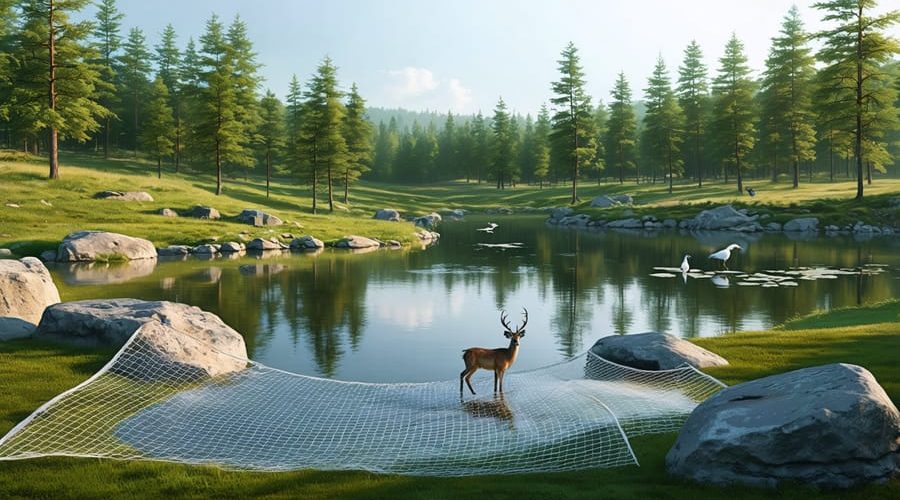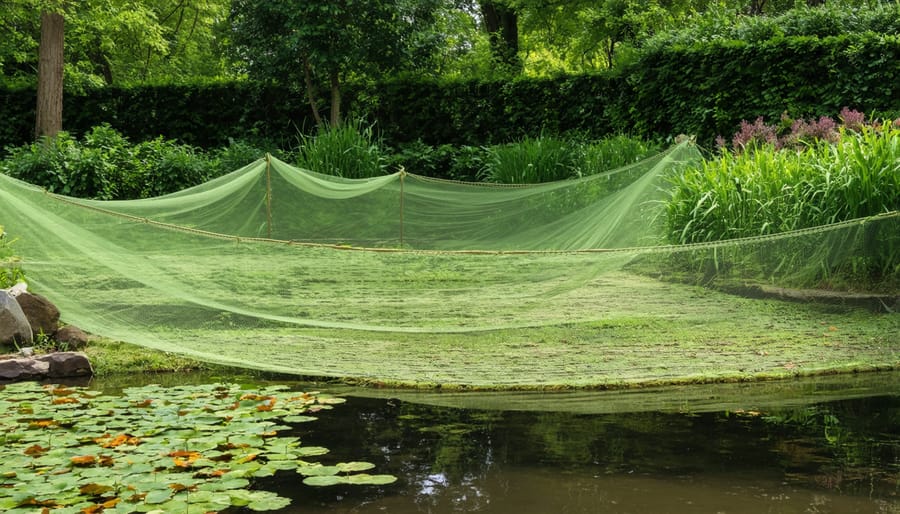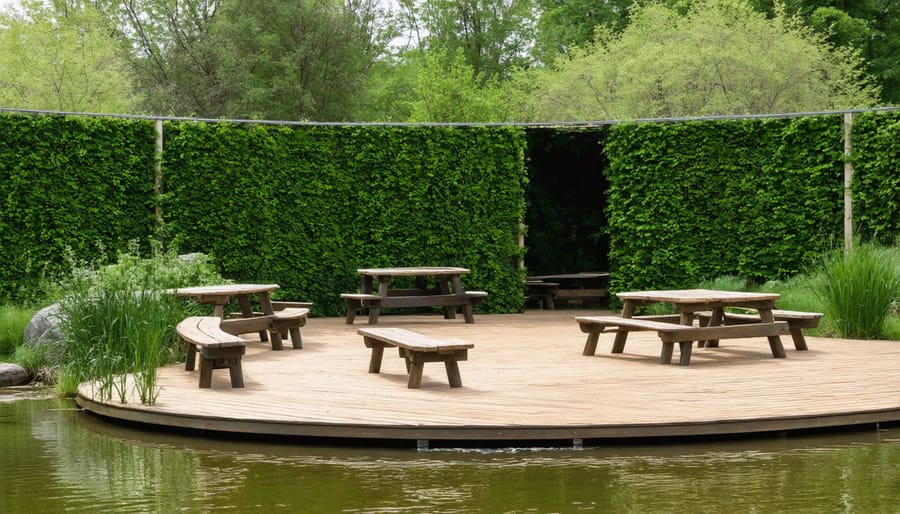
Living on Nature’s Edge: Smart Solutions for Pond Owners in Wildlife Zones
Living at the intersection of wilderness and civilization presents unique challenges and opportunities for homeowners. The wildland-urban interface (WUI) – where human development meets natural areas – represents one of the fastest-growing land-use types in America, with over 44 million homes now situated in these transitional zones. For pond owners and outdoor enthusiasts, understanding the WUI isn’t just about definition; it’s about crafting sustainable spaces that bridge the gap between human needs and natural ecosystems.
As communities expand into previously undeveloped areas, property owners must navigate the delicate balance between maintaining their outdoor features and coexisting with local wildlife. Whether you’re managing a backyard pond, planning a new water garden, or simply trying to protect your property, grasping the nuances of the WUI helps ensure both safety and environmental stewardship.
This guide explores the critical aspects of wildland-urban interface zones, focusing specifically on water feature management and wildlife interaction. We’ll examine practical strategies for protecting your investment while maintaining the natural character that makes these areas so special. From essential definitions to real-world applications, you’ll discover how to create harmony between your managed landscape and the wild spaces beyond your property line.
Understanding Your Property’s Wildlife Zone

Key Features of Wildland Urban Interface Areas
Wildland urban interface (WUI) areas are characterized by unique features that create both challenges and opportunities for homeowners, especially those interested in wildlife pond design. These zones typically feature a mix of natural vegetation and human development, creating a delicate balance between wild spaces and residential areas. The most prominent characteristic is the presence of natural vegetation within 150 feet of structures, often including native trees, shrubs, and grasslands.
These areas commonly have scattered or clustered homes, with varying population densities ranging from rural to suburban settings. Access points are often limited, with fewer roads and longer driveways typical of these regions. Natural features like slopes, canyons, or water bodies frequently intersect with developed areas, creating unique microclimates and wildlife corridors.
Another defining feature is the increased presence of wildlife activity, as these zones serve as transition areas between wilderness and urban environments. This makes them particularly attractive for nature enthusiasts but also requires careful consideration in landscape planning and maintenance to ensure safe coexistence between humans and local wildlife.
Local Wildlife Patterns in Interface Zones
Wildlife in interface zones often follows predictable patterns, especially around water features. Deer typically visit ponds during dawn and dusk hours, creating well-worn paths through vegetation. Raccoons and opossums are frequent nighttime visitors, drawn to shallow areas where they can easily catch small fish or frogs. Birds establish regular bathing and drinking schedules, with most activity occurring in early morning hours.
Local animals often create distinctive trails leading to water sources, which can become more pronounced during dry seasons. Small mammals like rabbits and squirrels tend to be most active during mid-morning and late afternoon, while larger predators such as coyotes may visit during quieter overnight hours. Understanding these patterns helps pond owners anticipate wildlife activity and plan appropriate protection measures for their water features while maintaining a harmonious balance with nature.
Protecting Your Pond in Wildlife Areas
Physical Barriers and Deterrents
Creating effective barriers doesn’t mean turning your pond into a fortress. There are several elegant ways to protect your pond from predators while maintaining its natural beauty. A popular solution is installing pond netting that’s barely visible when properly placed. Choose black or dark green mesh that blends with the surroundings, suspending it slightly above the water surface.
Natural barriers like strategic rock placement create both protection and visual interest. Position larger rocks around the pond’s edge, creating small caves and hiding spots for fish while deterring predators. Consider adding floating plants like water lilies, which provide cover for pond life while adding gorgeous blooms to your display.
Motion-activated sprinklers offer a humane way to discourage wildlife visitors. These can be positioned discreetly among plants and activate only when needed. Solar-powered LED lights serve double duty – they enhance your pond’s nighttime appearance while making wildlife more hesitant to approach.
For a more naturalistic approach, create shallow shelves within your pond design. These varying depths give fish escape routes while adding dimension to your water feature. Remember to incorporate these barriers thoughtfully into your overall landscape design, ensuring they complement rather than detract from your pond’s appearance.

Plant Selection and Placement
When selecting plants for your property in wildland urban interface areas, strategic choices can help discourage unwanted wildlife while maintaining an attractive landscape. Start by choosing native plants that are less appealing to local wildlife as food sources. Many native species are naturally resistant to browsing and offer the added benefit of being drought-tolerant and low-maintenance.
Consider creating defensive zones around your home using plants with lower fuel content and higher moisture levels. Succulents, for example, store water in their leaves and are less likely to catch fire. Space your plants appropriately to prevent creating wildlife corridors that animals might use to access your property.
For areas closer to structures, opt for plants with thorny or prickly characteristics that naturally deter larger animals. Lavender, sage, and rosemary not only add beauty to your landscape but also tend to be less attractive to deer and other browsing animals. These aromatic herbs can create natural barriers while serving multiple purposes in your garden.
Avoid planting fruit trees or berry bushes near your home, as these can attract wildlife looking for food. Instead, position such plants at the outer edges of your property if you wish to include them. Remember to maintain proper spacing between plants and regularly prune vegetation to prevent dense growth that could provide cover for wildlife or create fire hazards.
By thoughtfully selecting and positioning plants, you can create an effective buffer zone that helps manage wildlife interaction while enhancing your property’s appearance and safety.
Coexisting with Local Wildlife
Safe Wildlife Viewing Areas
Creating designated wildlife viewing areas in your wildland-urban interface property helps maintain a safe distance between humans and animals while fostering appreciation for local wildlife. Consider establishing elevated observation decks or covered viewing blinds near your pond, positioned strategically along natural wildlife corridors. These spaces should include informative signage about local species and viewing guidelines to educate visitors.
Install comfortable seating at least 50 feet away from known animal gathering spots, like water sources or feeding areas. Use natural screening materials like native shrubs or bamboo to minimize human visibility while maintaining clear sightlines for observation. Adding interpretive materials about seasonal wildlife patterns and behavior helps viewers understand when they’re most likely to spot different species.
Remember to incorporate features that prevent wildlife disturbance, such as motion-sensor lighting that dims automatically during peak animal activity hours and noise-reducing materials in viewing structures.

Seasonal Adjustments
Managing your pond throughout the year requires attention to wildlife patterns and seasonal changes. In spring, be extra vigilant during amphibian breeding season, installing temporary barriers around sensitive areas while maintaining essential wildlife corridors. Summer brings increased animal activity, so consider adding floating plants to provide natural cover and shade that benefits both wildlife and pond health.
As autumn approaches, gradually reduce feeding schedules and remove excess plant debris that could attract unwanted visitors. Install protective netting before leaf fall to prevent debris accumulation while still allowing wildlife access to water. During winter, maintain a small ice-free area using a floating deicer rather than breaking the ice, which can disturb hibernating creatures.
Remember that wildlife patterns vary by region and climate. Observe local animal activities throughout the year and adjust your management strategies accordingly. This balanced approach helps maintain your pond’s beauty while supporting the natural ecosystem in your wildland urban interface area.
Understanding the wildland urban interface is crucial for pond owners and water gardening enthusiasts who live in these transitional areas. By recognizing that we’re part of this unique ecosystem where human development meets natural wilderness, we can better protect our water features while respecting local wildlife.
Remember to assess your property’s specific risks and implement appropriate protective measures for your pond. Installing proper fencing, using deterrent devices, and maintaining regular maintenance schedules are all essential steps in creating a harmonious balance between your water garden and the surrounding wildlife.
For the best results, consider working with local wildlife experts and joining community groups focused on wildland urban interface management. Their knowledge and experience can prove invaluable in developing effective strategies for your specific situation.
By taking a proactive approach to pond management in wildland urban interface areas, you can enjoy your water feature while contributing to the preservation of local ecosystems. Start implementing these recommendations today, and you’ll be well on your way to creating a safer, more sustainable water garden that thrives in harmony with its natural surroundings.
